Meet the clean-up crew!
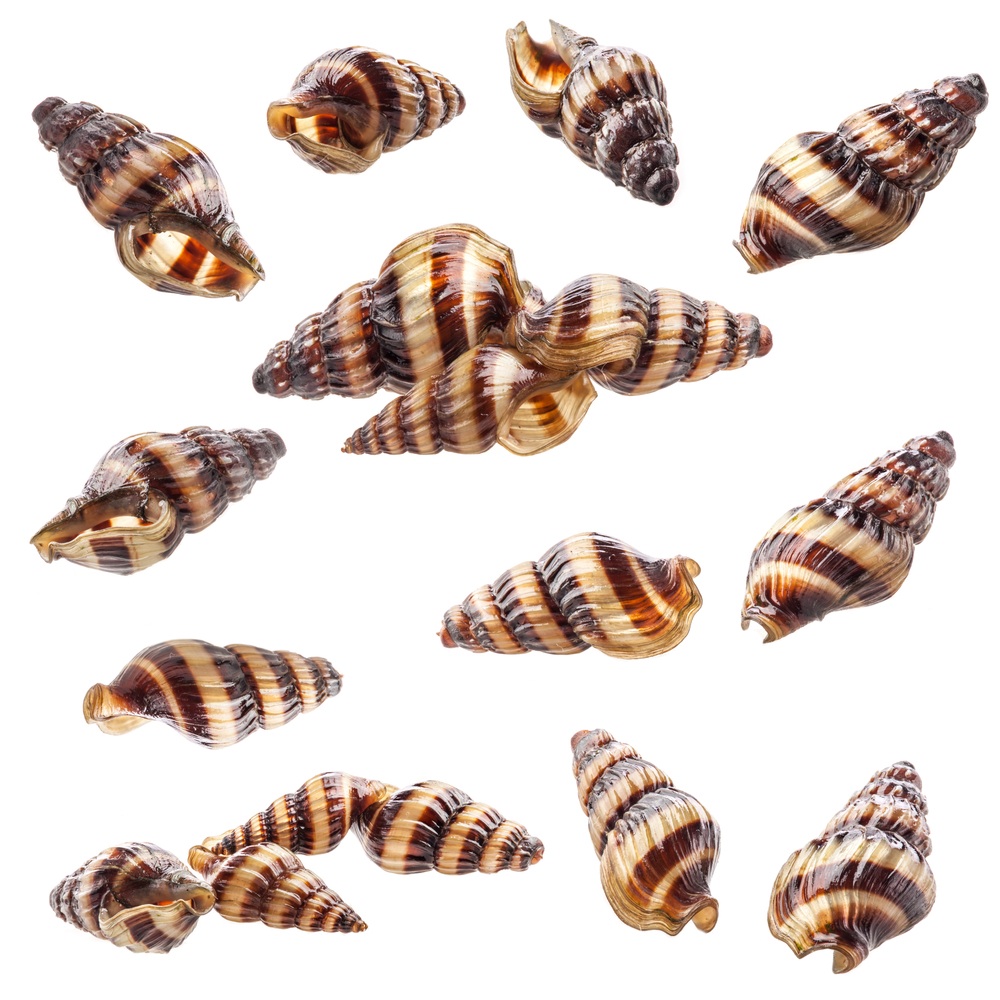
If your aquarium incorporates fish and living plants, have you thought that there could be a key element missing in this micro-ecosystem? Delve in any pond for example, and before long, you're likely to spot some aquatic snails.
The trouble is that up until now, snails have had quite a bad reputation with fish keepers. They are seen as destroying plants, often before these can become established in a new set-up, and also reproducing at an alarming rate, so that before you're really aware of it, the plants have gone, to be replaced by hoards of snails.
Attractive and useful
It is easy, then, to overlook the benefits of having snails in an aquarium, but there are a number, quite apart from the fact that they add another focus of interest within the tank. While some aquatic snails have attractively-patterned shells, others have brightly-coloured bodies.
As part of the current trend towards relying on biological rather than chemical control to curb algae in the aquarium, so there has been renewed interest in snails for this reason. They can also feed on any uneaten fish food, lessening the burden on the filtration system, and helping to maintain water quality as a result.
Biological control
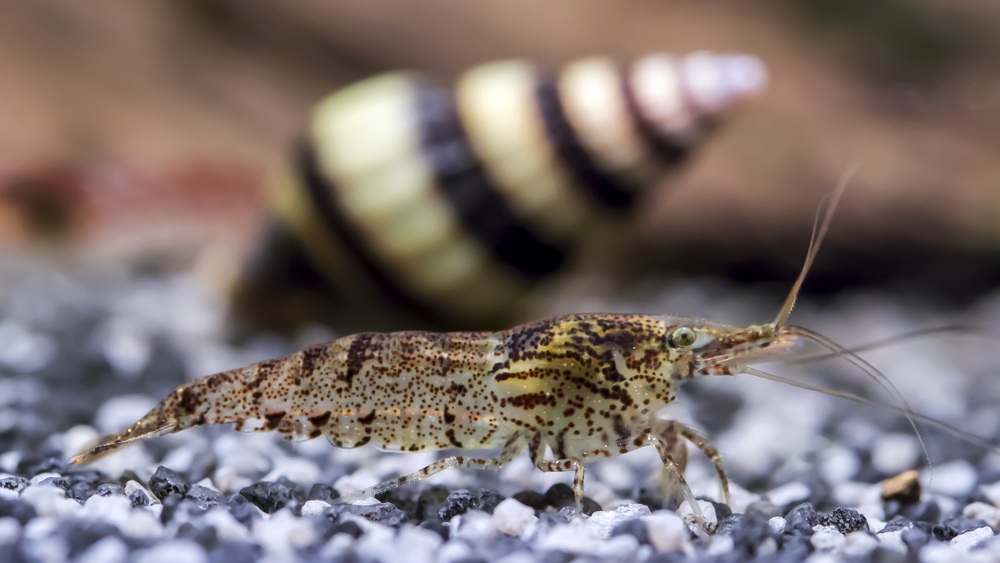
The even better news is that do not count towards the stocking density of the aquarium, and their own waste output is negligible. In most cases, different species of snail will agree without any problems, so you can add a number of different varieties, but beware with the assassin snail (Clea helena), which lives up to its common name.
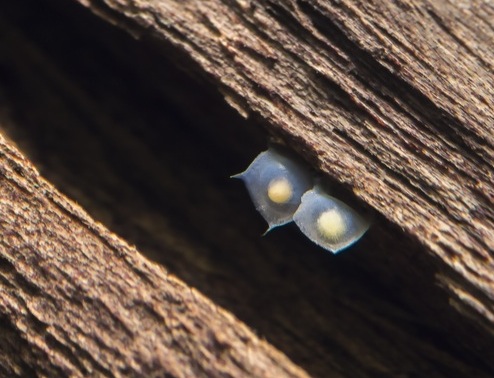
These south-east Asian snails, with their elongated shells and contrasting yellow and dark banding, may not look a significant threat, especially as they only grow to just over 2.5cm (1in) long. Yet they are very effective predators of their fellow molluscs.
As a result, they have become popular today as a means of controlling snail numbers in aquariums. They ignore fish and shrimp, and when not on the prowl, they tend to spend their time hidden away, frequently burying themselves in the substrate. You may see their eggs on occasions, hidden around the aquarium, as seen here hidden in a crevice in bogwood.
The amazing rabbit
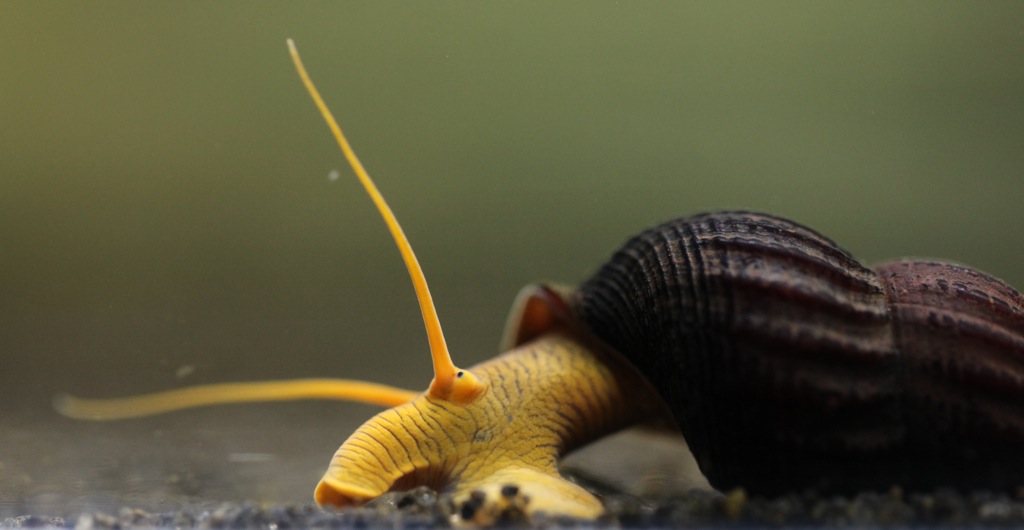
If you simply see the dark shell of the golden rabbit snail (Tylomelania gemmifera), you might be forgiven for thinking it is nothing special - until you see the occupant of the shell emerge. Not only is it a striking golden-yellow colour, but it also looks rather reminiscent of a rabbit - and hence its name!
It has a long head, with a downturned mouth, plus long antennae, that can look rather ears, depending on how they are being held. Some have darker, more spotted heads.
These remarkable snails were discovered living in Lake Matano on the Indonesian island of Sulawesi as recently as 2007. What makes them particularly suitable for an aquarium - aside from their good looks - is the fact that they have a very slow rate of reproduction. They will breed in a tank, but at such a slow rate that they will not threaten to take over, as they are only likely to produce a maximum of three miniature young at a time.
Rabbit snails can grow to 7.5cm (3in) or so, giving them presence in an aquarium too. They are general scavengers, and will serve to keep the tank free of algae. They are unlikely to cause any significant damage to other plants in the aquarium, although they may nibble the occasional leaf of Java fern, which seems to be a particular favourite. The photo seen above is courtesy of Sharnbrook Shrimp.
A range of nerites
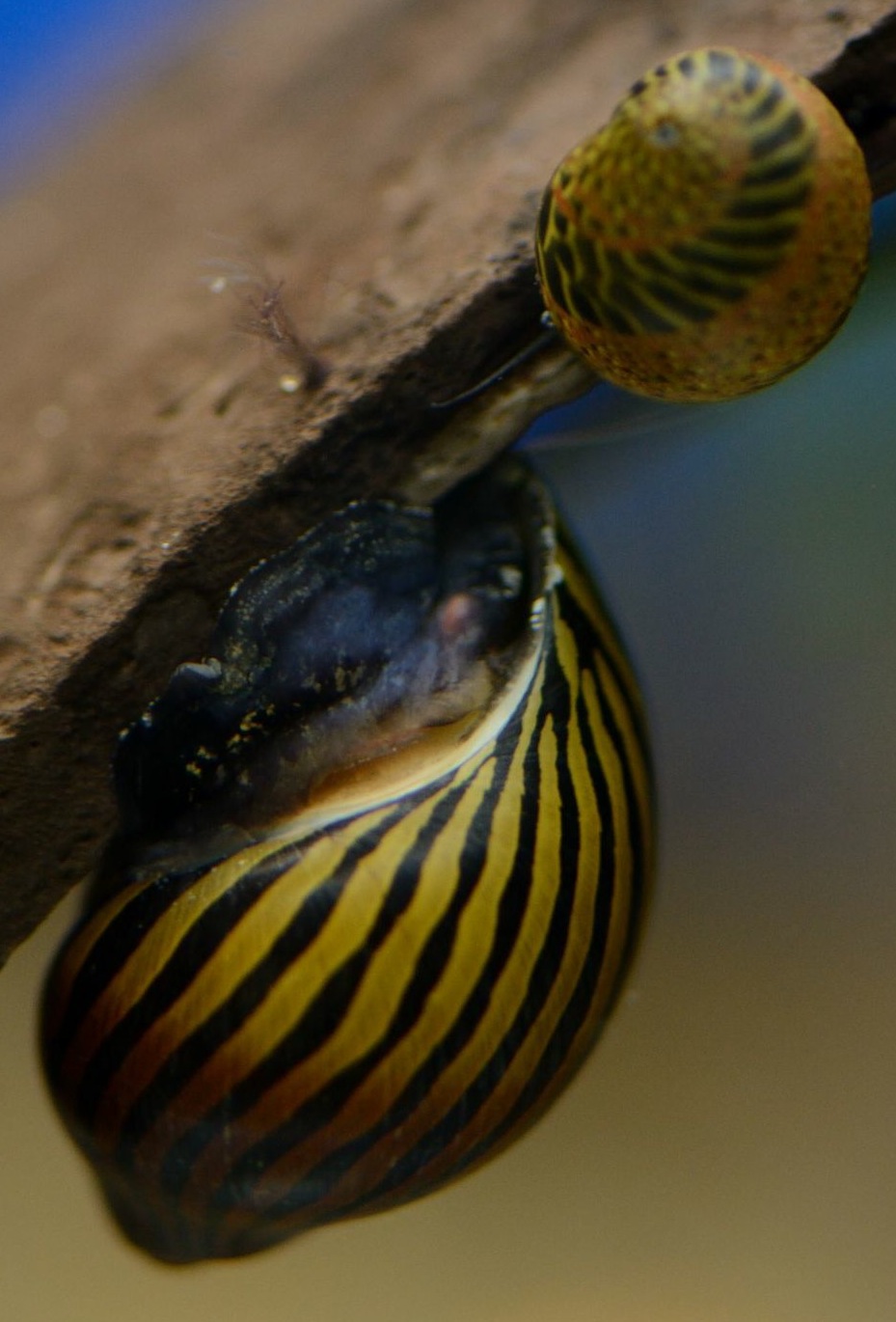
While rabbit snails can only be housed in tropical tanks, certain other members of the clean-up crew can live at slightly lower water temperatures. Some of the snails belonging to the genus Nerita fall within this category. The most popular nerites have colourful and/or attractively patterned shells. They include tiger bloods, which have red shells and dark spots, whereas those with striped patterning are known as zebras.
You may also see some of these snails displaying more subdued colouration, being olive or even black in colour. They have a very wide range in the wild, being found in Florida, the Gulf of Mexico and through parts of the Caribbean, inhabiting rivers and similar stretches of water close to the sea.
They actually a very unusual breeding cycle, that explains why they will not take over in a tank. Sexing them is no problem, particularly if you have had them some time, as you can then be fairly sure that the larger snails are the females. They grow to a maximum size of about 2cm (0.75in).
Yet nerita snails will never breed in a freshwater aquarium. This is because the larvae of these snails must spend time in saltwater, in order to complete their development. Adults will browse on algae and scavenge for any leftover food, but they are unlikely to cause serious harm to plants in the aquarium. Should there be insufficient algal growth for them in your tank, then provide some plec wafers (as sold for herbivorous catfish) or similar food. When housed in suitable surroundings, these snails will live for about a year. (The photos of nerites, shown are courtesy of Adam Hough Photography).
Other possibilities
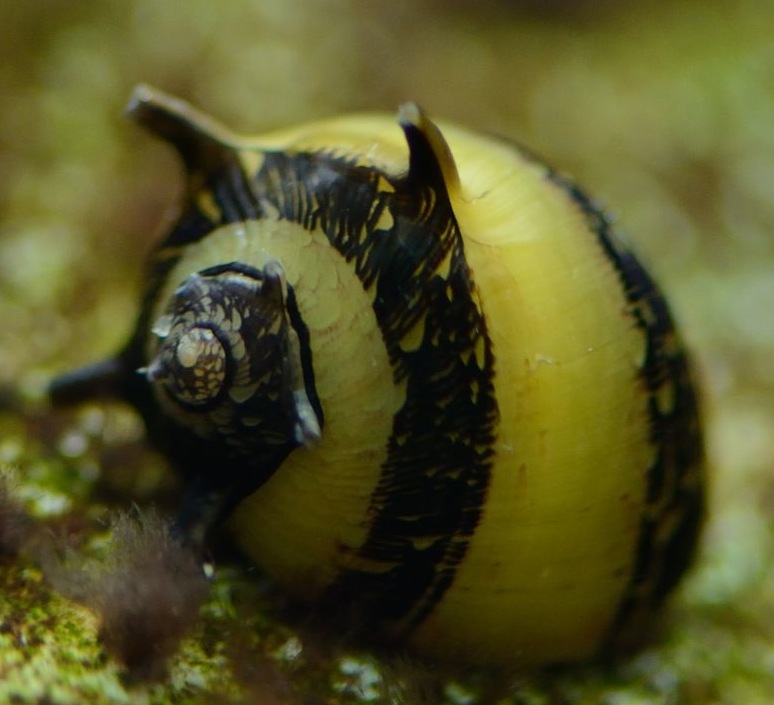
Another popular member of this group is the highly distinctive horned nerite snail (Clithon corona). It has a swirled black and yellow pattern, sometimes bordering on orange, with highly distinctive projections, resembling horns, extending around the shell. These help to protect the snails from predators, and are actually quite sharp, so handle them carefully.
Horned nerite snails are small in size, only growing to about 1.3cm (0.5in). This helps them to reach patches of algae that would otherwise be inaccessible to their larger relatives. On occasions, they may climb out above the water level, which can be an indication that conditions are not to their liking.
You may also see red lip nerite snails as well. They can be distinguished at a glance by their flatter appearance. Again, they display attractive markings, and are Asiatic in origin. Once again, they cannot breed successfully in freshwater, so there is no likelihood of them taking over your tank.
Safety precautions
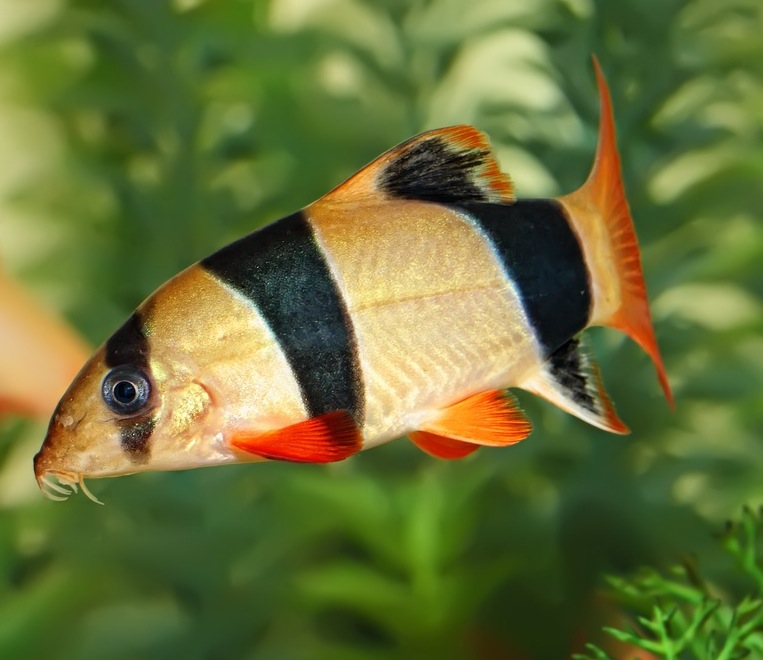
You need to beware that not all fish are likely to be compatible with snails. Some such as clown loaches (as shown right), various cichlids and pufferfish will prey on them. In addition, be very careful if you have to medicate your aquarium at any stage.
Some treatments can prove deadly to snails, particularly those recommended for treating parasitic infections such as white spot, so check this carefully beforehand. Ask in-store or contact the manufacturer if necessary. It is always better to be safe than sorry!